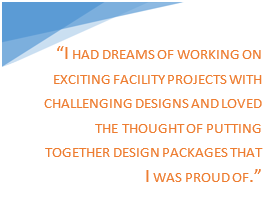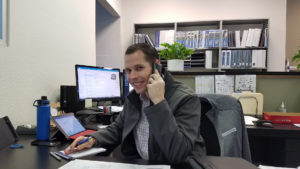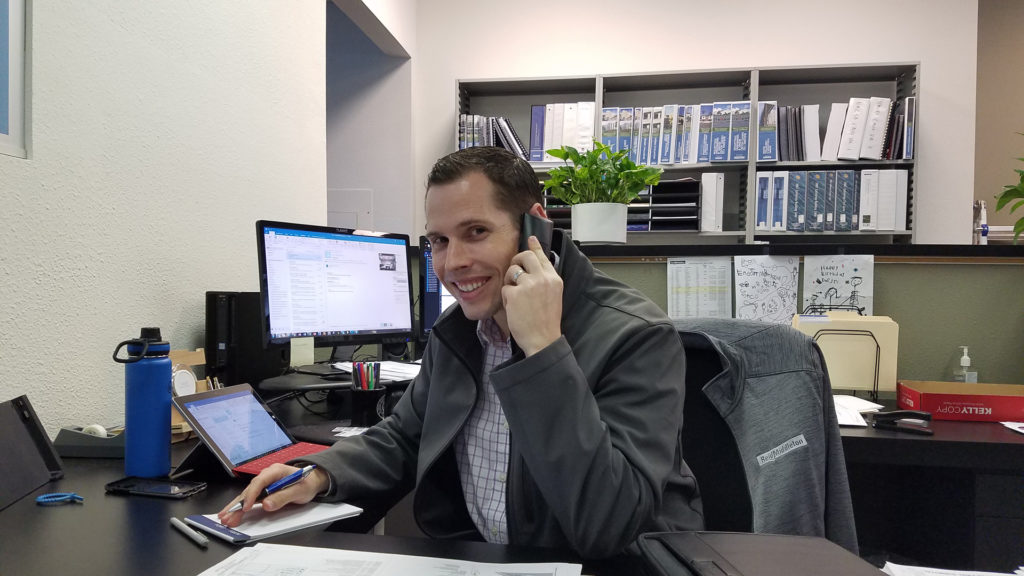It all began a few years ago – the growing battle in my stomach between making a career and life change by leaving the federal government and going to the private sector or stay with the comfortable career path and retire a lifetime employee of the federal government. I think a lot of people would be curious why I did it. Why would I give up a secure, well-paid, life-long career with the government? I had heard peoples’ horror stories about layoffs, working a ton of overtime, etc. It all went into consideration. Ultimately, what I had learned about myself at each of the stops during the first decade of my engineering and government career gave me the courage to take that first step.
In the Beginning
 My federal career began with a 2 year position in the Miami Florida area at Homestead Air Reserve Base – a fun destination for a young guy from Ohio. Being a wide-eyed intern at Homestead ARB, I quickly realized that engineering design was not going to be commonplace in my government career. I remember being bummed out about this a little bit. When I studied engineering in school, I had dreams of working on exciting facility projects with challenging designs and loved the thought of putting together design packages that I was proud of. That brief disappointment was quickly clouded by my excitement for living in Miami and my pride in being a government employee. I realized immediately that there was going to be a void in my career. If I was going to make a life-long career as a government engineer, I was going to have to sacrifice being a designer and consultant. I didn’t know if I was okay with it or not, but I went with the flow because I could make a change if I wanted to.
My federal career began with a 2 year position in the Miami Florida area at Homestead Air Reserve Base – a fun destination for a young guy from Ohio. Being a wide-eyed intern at Homestead ARB, I quickly realized that engineering design was not going to be commonplace in my government career. I remember being bummed out about this a little bit. When I studied engineering in school, I had dreams of working on exciting facility projects with challenging designs and loved the thought of putting together design packages that I was proud of. That brief disappointment was quickly clouded by my excitement for living in Miami and my pride in being a government employee. I realized immediately that there was going to be a void in my career. If I was going to make a life-long career as a government engineer, I was going to have to sacrifice being a designer and consultant. I didn’t know if I was okay with it or not, but I went with the flow because I could make a change if I wanted to.
Moving On Up
From Homestead ARB I moved on to Edwards AFB, CA where I was excited about the opportunity to work at a bigger installation, live outside of Los Angeles, and be more involved in structural systems in the new position. My time at Edwards AFB was an attempt to both move up the government food chain and also become more directly involved in structural engineering, after all, that is what I specialized in undergrad. My new position had me managing the repair and maintenance plans for structural systems throughout the installation such as roofs, cranes, hangar doors, etc. I had to develop prioritized five-year maintenance plans for the different systems and then execute and manage the projects – a challenge I found fun.
NAVFAC SW
Personal reasons led me down to San Diego with Naval Facilities Engineering Command Southwest (NAVFAC SW). Early on, I was ecstatic to be working on large facility design projects. This job was beginning to fill that void of being a designer and consultant. At first, I wasn’t one of the engineers actually carrying out the designs, but I was heavily involved in key decisions for the projects and I was learning a lot from the experienced engineers with whom I was working. Then, the technical competency requirement within NAVFAC came out (this was a requirement for engineers and architects to perform more in-house design) and I was finally getting my first taste of true design since my brief position with a bridge design firm in Columbus, OH. I am so fortunate that NAVFAC pushed out this technical competency requirement. I would say it is one of the primary events, if not the primary event, that led me down the path of where I would eventually be today. It wet my pallet with design experience, but even then, I wasn’t satisfied with the volume. If it were up to me, I would have been doing nothing but design.
I decided to go back to school and get my Master’s degree. Surprisingly, there was a lot of pressure within the government to get my MBA rather than a technical Master’s. The argument was, “You aren’t going to use a technical Master’s in the government.” Still, I followed my heart and got my Master’s in structural engineering. I was finally settled into my position with NAVFAC when I started to go to school.
A Master’s Degree and Stint in Maryland
With my master’s degree and my professional engineering license in hand, I found myself asking, “What’s next?” – fixated on moving up the chain. For whatever reason, I had convinced myself that moving up the chain would fill whatever gap I thought I had in my job at the time. We moved to Patuxent River, MD, (PAX) for a promotional opportunity. It seemed like great timing. I fell right into a situation where I had the opportunity to take on the Design Team Lead role of the Project Management and Engineering Branch within the Public Works Department (this is why there are so many acronyms in the government). In a supervisory position, this was the first time I was separated from being directly involved in projects. As the job was new and I was learning and figuring out what I needed to do, it was exciting. Perhaps it was the challenge of learning something new that excited me more so than anything. In time, I learned that I missed working on projects. I missed structural engineering.
Ten Years In
After a couple of years, my family became homesick. It is pretty easy to understand why, what is not to like about San Diego (okay, the cost of living, but besides that)? I was able to transfer back to NAVFAC SW into the same position I had previously held with the command, but on a different team. I was happy to be back in something a little more technical, but especially happy to be back in San Diego. I was now officially 10 years into my federal government career and I was beginning to accept that I would perhaps be a life-long federal employee. There is nothing wrong with that, obviously, but it was also apparent that I had felt that I was missing something I desired in the career.
Decisions
A January training in Seattle changed things. I met up with a colleague (who would eventually become my co-worker at Reid Middleton) just casually for dinner. During our conversation that evening, I had mentioned how I was perhaps beginning to accept being a life-long federal employee, while my colleague was telling me about how they have been looking for the right fit for their San Diego office. A few days after I returned home from the training, I thought about the opportunity in front of me (funny how they present themselves), and decided to ask about the opportunity. Next came a pretty gut-wrenching couple of months trying to decide whether to make the jump from federal government employee to consulting engineer or not. I must have gone back and forth on the decision a million times. And then I couldn’t believe it was happening as I was accepting the position and letting all my fellow NAVFAC SW co-workers know of my plans.
A New Path at Reid Middleton
 So far, I am glad I made the change. It has been extremely challenging, though. I expected the transition to be a bit difficult, and… I was right. But it has been exciting and humbling too. I am thrilled to be designing again and actually practicing structural engineering. The humbling part is really getting through the growing pains of the transition and understanding what I need to do, what authority I have, meeting expectations, and learning the company policies and procedures, etc. As time progresses, I find myself feeling more and more comfortable. I am genuinely excited about the potential of our San Diego office and really excited to play a large role in what it becomes. More importantly, I feel that I really fit in with the personalities on the team. I enjoy being in an environment that thrives on efficiency. The way I describe my new environment to others is ‘a place where people really jump at the opportunity to help each other and take great pride in what they do and in doing it well’.
So far, I am glad I made the change. It has been extremely challenging, though. I expected the transition to be a bit difficult, and… I was right. But it has been exciting and humbling too. I am thrilled to be designing again and actually practicing structural engineering. The humbling part is really getting through the growing pains of the transition and understanding what I need to do, what authority I have, meeting expectations, and learning the company policies and procedures, etc. As time progresses, I find myself feeling more and more comfortable. I am genuinely excited about the potential of our San Diego office and really excited to play a large role in what it becomes. More importantly, I feel that I really fit in with the personalities on the team. I enjoy being in an environment that thrives on efficiency. The way I describe my new environment to others is ‘a place where people really jump at the opportunity to help each other and take great pride in what they do and in doing it well’.
Only time will tell where things go from here; I am excited about the possibilities though. I think the key thing right now that has me feeling like I made a good decision is that I don’t find myself thinking about what I wish I would rather be doing.


